How can there ever be a post even mildly critical of the Lightnings out here with sweetie not there to defend it's honour & reputation with xis / xer / xem / xeir life ?Lol. Have you seen Rafales with "rust" on top? There's plenty pics of them, Vlad. Same with F-18E's.
Lockheed Martin F-35 Lightning and F-22 'Raptor' : News & Discussion
- Thread starter Nick
- Start date
You are using an out of date browser. It may not display this or other websites correctly.
You should upgrade or use an alternative browser.
You should upgrade or use an alternative browser.
Pentagon Cuts Its Request for Lockheed’s F-35s by 35%
- Defense Department to seek 61 in next budget instead of 94
- Fighter is flying over Eastern Europe despite software issues
16 mars 2022, 11:00 UTC+1 Updated on16 mars 2022, 21:27 UTC+1
The Pentagon will request 61 F-35s in its next budget, 33 fewer of the stealth jets from Lockheed Martin Corp. than previously planned, according to people familiar with the spending blueprint.
The U.S. Defense Department had planned to fund 94 of the fighters in fiscal 2023, up from the 85 in this year’s budget, according to the most recent “Selected Acquisition Report” on its costliest program.
Lockheed tumbled 6.1% to $421.34, the steepest decline since Oct. 26.
The proposed reduction for the F-35 may be the most controversial procurement item in a national security budget request that’s expected to top $770 billion for the year that begins Oct. 1.
The F-35 is currently being deployed to Eastern Europe in response to Russia’s invasion of Ukraine. Six F-35s from the Air Forces 34th Fighter Squadron are flying “air policing” missions from Estonia and Romania. German Defense Minister Christine Lambrecht announced Monday that Germany would buy 35 of the warplanes.
But the proposed slowdown in purchases may raise questions among lawmakers, Lockheed investors and overseas customers about a lessening of the U.S. commitment to a program projected to cost $398 billion in development and acquisition plus an additional $1.2 trillion to operate and maintain the fleet over 66 years. The people familiar with the budget plan asked not to be identified in advance of the budget release in coming weeks.
The rationale for the reduction won’t be officially explained until the proposed Pentagon budget is made public. But the request comes as negotiations with Bethesda, Maryland-based Lockheed over the next F-35 contract -- for about 400 planes -- are going slower than anticipated. And F-35s remain hobbled by flawed execution of a crucial upgrade of their software and hardware capabilities that’s estimated to cost $14 billion.
Boeing’s F-15EX
Along with the proposed F-35 reduction, the Air Force will request 24 non-stealthy F-15EX jets built by Boeing Co., up from 14 planned in the fiscal 2021 budget. The EX model carries more ordnance than the F-35 and is estimated to be cheaper to fly. Still, the service plans to purchase many more F-35s than EX jets.Asked about the cutback in planned F-35 purchases, Laura Seal, spokeswoman for the Defense Department’s F-35 program office, said the budget request can be discussed “once it is delivered and released, but not before.” Spokespersons for the Air Force, the largest customer for F-35s, and the Navy made similar comments.
The Air Force will request 33 F-35As instead of the 48 planned, the Navy will seek 13 of its version instead of 26 and the Marine Corps will request 15 rather than 20.
The F-35’s “Block 4” software and hardware upgrade is currently being installed on deployed jets even though it’s “immature, deficient and insufficiently tested,” according to an assessment by the Pentagon testing office released in January. Aircraft operators “identified deficiencies in weapons, fusion, communications and navigation, cybersecurity and targeting processes that required software modification and additional time and resources, which caused delays,” it said.
The aircraft flying missions now, including those in Europe, are described as capable by Pentagon officials, however. “We understand the threats that the F-35 is going up against today,” Lieutenant General Eric Fick, who heads the F-35 program office, told reporters this month. “We understand the threats largely propagated throughout Europe, and those were the threats that the airplane was developed to counter.”
Earlier: Lockheed’s F-35s Get a Flawed $14 Billion Software Upgrade
A person familiar with the Air Force’s rationale for purchasing fewer planes said it shouldn’t be seen as stepping back from the service’s long-stated goal to buy 1,763 F-35s. Instead, the person said, it’s a matter of slowing purchases until the full Block 4 capability can be delivered on new jets in order to minimize the cost to retrofit them.
In addition, the F-35 is at least 14 months from starting and completing a much-delayed combat simulation to test its performance against the most advanced Russian and Chinese air defense and aircraft threats it faces now and are likely in the future. The simulated sorties were to take place in 2017, then 2020 and are now planned for sometime between June and September of 2023, Fick told reporters this month.
No, it wasn't faulty at all. To begin with, they made it only that much stealthy what was required at that time in 1990s for next 3-4 decades bcoz no other country was even near them, neither Russia nor EU. RCS of F-22 is around 0.00015 sqm & today after 3 decades also Su-57 & J-20 are no where near it. The F-22 compelled the EU to dump 5th gen design & jump directly to 6th gen FCAS & Tempest R&D.So in a way , the Americans are admitting without actually doing so that their concept of stealth was faulty to begin with. What started out as a VLO fighter is now LO & by the end of the decade could well lose the prefix L .
Astounding !!
For all the background that the US has had in stealth fighter design & operating experience for nearly 5 decades to be so off the mark in terms of forecasting the future of stealth is nothing short of shocking whereas the French - neophytes to the field played it by the ear & decided to go in for the incremental approach as @Picdelamirand-oil has been stating since a long time is finally vindicated.
Who's willing to wager a bet that in the next upgrade of the Lightnings due in a few years we'd see something similar. Oy ve !!
So far it seems these pylon-pods have not been publicly presented. But at least 1 page is speculating that these could be prototype for IRST or jammers or even dual combo. Hence these being integral part of EW & EOTS won't require to be jettisoned. The F-22's engines give enough power to their electronics & very little loss in T/W ratio.

Something similar has been shown in F-18E/F future expansion

If implemented as dual L+R EOTS then they will cover left & right hemispheres. This reminds me of F-16 AFTI's dual pods on LERX.
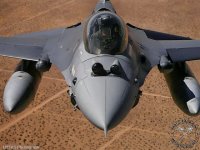
Above the F-16-AFTI demonstrated multiple simultaneous grond+air functions like FLIR, IRST, LD, etc which manifested later in form of DAS/MAWS+EOTS in F-35.
Single RF beam can act like LRF but EO/IR will need atleast 2 sensors to approximately bisect & locate a target passively w/o RF assistance.
The F-22's airframe may not be feasible to modify & blend this pylon-pod in wing, LER, chin, cheeks, rudder, etc.
This can also work as a stealthy pylon in beast-mode as long as only 1 payload is attached. Next challenge would be to address multi-attachment pylon. The usual pylons are useless after weapons are used until next sortie & cannot be jettisoned, hence pose huge threat to current 5th gen jets in beast mode. The stealth pod also suffers same weakness.
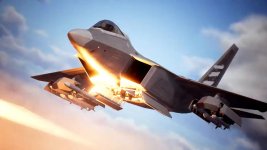
Below is concept for Su-30MKI MAWS concept similar to western implementations:

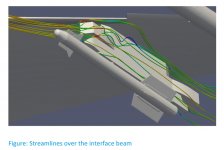

Western implementations for 4th gen jets include different models for combining CMDS, MAWS, jammer, EO sensors, RWR:

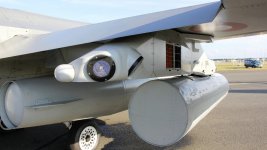
But for 5th gen jets some modifications are required for final product to reduce the RCS.
CAUTION: Don't ever compare 4th & 5th gen requirements & implementations.
The AMCA team can learn a lot from this for MK2 version & can try to blend such implementations in the airframe itself. Wingtip pod implementation won't be required which hinders roll-rate.
In 6th gen jet such pylon-pod or blended implementation might come in handy for external loads or DEW.
Extremely detailed & well compiled post. Thanks for this.No, it wasn't faulty at all. To begin with, they made it only that much stealthy what was required at that time in 1990s for next 3-4 decades bcoz no other country was even near them, neither Russia nor EU. RCS of F-22 is around 0.00015 sqm & today after 3 decades also Su-57 & J-20 are no where near it. The F-22 compelled the EU to dump 5th gen design & jump directly to 6th gen FCAS & Tempest R&D.
So far it seems these pylon-pods have not been publicly presented. But at least 1 page is speculating that these could be prototype for IRST or jammers or even dual combo. Hence these being integral part of EW & EOTS won't require to be jettisoned. The F-22's engines give enough power to their electronics & very little loss in T/W ratio.
View attachment 22989
Something similar has been shown in F-18E/F future expansion
View attachment 22990
If implemented as dual L+R EOTS then they will cover left & right hemispheres. This reminds me of F-16 AFTI's dual pods on LERX.
View attachment 22991
Above the F-16-AFTI demonstrated multiple simultaneous grond+air functions like FLIR, IRST, LD, etc which manifested later in form of DAS/MAWS+EOTS in F-35.
Single RF beam can act like LRF but EO/IR will need atleast 2 sensors to approximately bisect & locate a target passively w/o RF assistance.
The F-22's airframe may not be feasible to modify & blend this pylon-pod in wing, LER, chin, cheeks, rudder, etc.
This can also work as a stealthy pylon in beast-mode as long as only 1 payload is attached. Next challenge would be to address multi-attachment pylon. The usual pylons are useless after weapons are used until next sortie & cannot be jettisoned, hence pose huge threat to current 5th gen jets in beast mode. The stealth pod also suffers same weakness.
View attachment 22992
Below is concept for Su-30MKI MAWS concept similar to western implementations:
View attachment 22993
View attachment 22994
View attachment 22995
Western implementations for 4th gen jets include different models for combining CMDS, MAWS, jammer, EO sensors, RWR:
View attachment 22996
View attachment 22997
But for 5th gen jets some modifications are required for final product to reduce the RCS.
CAUTION: Don't ever compare 4th & 5th gen requirements & implementations.
The AMCA team can learn a lot from this for MK2 version & can try to blend such implementations in the airframe itself. Wingtip pod implementation won't be required which hinders roll-rate.
In 6th gen jet such pylon-pod or blended implementation might come in handy for external loads or DEW.
No, it wasn't faulty at all. To begin with, they made it only that much stealthy what was required at that time in 1990s for next 3-4 decades bcoz no other country was even near them, neither Russia nor EU. RCS of F-22 is around 0.00015 sqm & today after 3 decades also Su-57 & J-20 are no where near it. The F-22 compelled the EU to dump 5th gen design & jump directly to 6th gen FCAS & Tempest R&D.
As per the USAF, their E-3 AWACS can't spot the J-20 from far away, so it's pretty good. And you can bet the Su-57 would actually be better.
Did USAF state how far is "far away" for the E-3 against J-20? How can we verify if they are honest or tactical? It would be really foolish to disclose "Hey dear enemy! i can see you from 400Kms"As per the USAF, their E-3 AWACS can't spot the J-20 from far away, so it's pretty good. And you can bet the Su-57 would actually be better.
E-3 is old now, needs replacement against 5th gen jets.
J-20 & Su-57 are definitely good otherwise Xi-Jinping & Putin would have got the scientists & engineers prosecuted & perhas executed for wasting tax payer's money.
But it takes huge funding & years for R&D of latest technologies. So F-22 would lead in RCS with 0.00015 sqm while J-20 & Su-57 are around 0.1 sqm (as per publicly disclosed data). Exact figures could be secret but still F-22 would lead J-20 & Su-57.
W.R.T. this latest development seen on F-22, it is speculated to be IRST &/or jammer. F-22 was not intended for having EOTS due to stealth reasons, the F-35 has 10x RCS (0.0015 sqm) than F-22.
Now the situation has changed since the F-35 DAS detected rocket plume from 1300 Kms in 10x digital zoom. Hence not just AESA radar is important but also POSA-EOTS. F-22 cannot remain dependant on F-35 hence we are seeing testing of this pylon-pod. We have to wait & see what is finalized.
And yes the Su-57 can definitely beat F-22 in dogfight but in BVR F-22 has upperhand bcoz Su-57 RCS is not optimized from all angles.
Did USAF state how far is "far away" for the E-3 against J-20? How can we verify if they are honest or tactical? It would be really foolish to disclose "Hey dear enemy! i can see you from 400Kms"
E-3 is old now, needs replacement against 5th gen jets.
It's a very big revelation.

Incapable Against J-20 Fighters – US Air Force Says 'Not Ready For 21st-Century Battle' With China Due To Outdated AWACS
The enhanced presence of the US Air Force & Navy in the Indo-Pacific could mean more encounters with the Chinese military, as was recently revealed by the Pacific Air Force Chief Kenneth Wilsbach about the F-35 and J-20 stealth fighters. Lightning Aircraft Carrier – Loaded With F-35B Stealth...
 eurasiantimes.com
eurasiantimes.com
It doesn't matter how old the E-3 is, it still has a PESA and modern computers. If the claim is the J-20 is not as stealthy as the F-22, then it should be detectable on the E-3's radar.
But it takes huge funding & years for R&D of latest technologies. So F-22 would lead in RCS with 0.00015 sqm while J-20 & Su-57 are around 0.1 sqm (as per publicly disclosed data). Exact figures could be secret but still F-22 would lead J-20 & Su-57.
W.R.T. this latest development seen on F-22, it is speculated to be IRST &/or jammer. F-22 was not intended for having EOTS due to stealth reasons, the F-35 has 10x RCS (0.0015 sqm) than F-22.
Those numbers are misleading. Su-57's figures are average figures, while the F-22's are aspect figures.
The F-35 has a smaller RCS than the F-22.
Now the situation has changed since the F-35 DAS detected rocket plume from 1300 Kms in 10x digital zoom.
That's not a big deal. One can see rockets from even further away in the night with just the eyes.
The question is how far away it can see heat from friction.
And yes the Su-57 can definitely beat F-22 in dogfight but in BVR F-22 has upperhand bcoz Su-57 RCS is not optimized from all angles.
Not once the new engine comes in.
It is curious how similar the description of the American sixth generation aircraft is to the Rafale.






America’s Sixth Generation Fighter Will Emphasise Electronic Warfare Prowess Over Stealth or Speed - Reports
Speculation regarding the capabilities of America’s upcoming sixth generation fighter jets have been widespread for over a decade, and have grown considerably in light of the announcement in September that the Air Force had already test flown an early prototype of such an aircraft. At least two sixth generation jet are currently under development, one for the Navy to replace its F-18E Super Hornets, and the other for the Air Force to succeed the Lockheed Martin F-22A Raptor in frontline service in the 2030s.
The fifth generation Raptor has served in the Air Force since December 2005, but is expected to see an early retirement. Where the primary technological breakthroughs of the fifth generation of fighter aircraft included active electronically scanned array radars and radar cross section reducing stealth airframes, the first sixth generation fighters could have a very different emphasis. Improvements in sensor technologies are increasingly threatening to undermine the viability of stealth and outpace the rate at which stealth technologies can provide countermeasures to being detected and locked onto. As a result, America’s next generation fighter could well be much less stealthy than expected, and instead place a much greater emphasis on electronic warfare to remain survivable.
Attesting to the growing limitations of stealth technology, referring to the only Western stealth fighter in serial production today the F-35, Israel’s former Defence Minster Moshe Arens stated: “anti-stealth technology is being developed and may yet neutralise what is being advertised as the aircraft's major advantage before delivery or within its operational lifetime.” Arens had instead advocated that Israel focus on developing its indigenous Lavi lightweight attack jet, which not only came at a much lower cost than the F-35 but also placed an extremely heavy emphasis on electronic warfare and had no stealth capabilities whatsoever.
Speaking specifically regarding America’s sixth generation fighter program, the Chief of Naval Operations Jonathan Greenert stated that the jet would need to focus on suppressing enemy air defences rather than outrunning them or hiding from them with a high speed or stealth airframe. “You know that stealth maybe overrated. I don’t want to necessarily say that it’s over but let’s face it, if something moves fast through the air and disrupts molecules in the air and puts out heat – I don’t care how cool the engine can be – it’s going to be detectable…. It has to have an ability to carry a payload such that it can deploy a spectrum of weapons. It has to be able to acquire access probably by suppressing enemy air defences.”
Greenert notably also dismissed the possibility of using faster aircraft to evade enemy defences, something the Soviet Union fielded successfully in the final two decades of the Cold War with the highly survivable MiG-25 Foxbat interceptors - later variants of which also relied heavily on electronic attack capabilities to operate in highly contested airspace. “I don’t think it’s going to be super-duper fast, because you can’t outrun missiles,” the official said regarding the new aircraft.
China has notably demonstrated a capability to intercept hypersonic targets using its Russian-supplied S-400 air defence system, a platform which has been in service since 2007, and the upcoming S-500 system and its Chinese analogues will be able to lock onto and destroy even faster targets at longer ranges still. The U.S. Air Force is nevertheless separately investing in hypersonic aircraft for both bombing and reconnaissance missions, while Russia is developing a hypersonic sixth generation interceptor capable of operating in space under the MiG-41 program. Although the MiG-41 may well prove viable, due to its purely defensive mission and dedication to space warfare, conventional sixth generation fighter jets are unlikely to prioritise either stealth or speed if they seek to operate offensively in highly contested airspace.
America’s Sixth Generation Fighter Will Emphasise Electronic Warfare Prowess Over Stealth or Speed - Reports
 militarywatchmagazine.com
militarywatchmagazine.com
It's a Rafale in fact.
Military Watch Magazine
It's a Rafale in fact.
Composite can be made of epoxy and... metallic fibers, so it can rust !More clickbait. Can you explain how an epoxy composite can rust? It is simply dirt and grime.
But the explanation is grease and dirt indeed.
Ok you are diverting from this focus on F-22's new mysterious gadget. I'm aware of E-7. Let's keep E-3, E-7 & USA-China war out from here.It doesn't matter how old the E-3 is, it still has a PESA and modern computers. If the claim is the J-20 is not as stealthy as the F-22, then it should be detectable on the E-3's radar.
We all are common citizens here on unofficial forum, dependant on countless public media.Those numbers are misleading. Su-57's figures are average figures, while the F-22's are aspect figures.
The F-35 has a smaller RCS than the F-22.
The frontal RCS of Su-57 could be near to F-22 but the design overall has flaws bcoz of which we pulled out of the Su-57 FGFA program. The Su-57 appears like a flattened & chiselled Su-3X. The Russians were using us as cash-cow & refused sharing knowledge & technology transfer.
The F-22 still is costliest of all jets for a reason of its stealth, etc. A newer jet like F-35 will obviously have some better sub-systems like wide touchscreen display, better avionics, HMDS, better DAS, EW, etc. Otherwise what's the use of calling it a newer product.
However, in the documentaries & other media in 1990s on F-22 told that from beginning F-22 was designed as ADF (Air Dominance Fighter) hence EOTS was not required for laser designation & IRST which was requirement for F-35. The supreme focus was on stealth. Hence F-22 was also never intended to be sold even to closest allies but F-35 was, again there is a reason of stealth. USA doesn't wan't certain secrets of F-22 to be leaked out. An export jet is supposed to be lesser capable relative to domestic version for self-use. The F-35 also has lifting body fuselage while F-22 has more piercing body lowering RCS.
Hence F-35 cannot have lower RCS than F-22 bcoz it was never intended from design & business PoV.
Anyways, coming back on the focus, the F-22 team seems to be testing pylon-pod based EOTS/IRST unless u now exactly what it is.
F-22 has AN/AAR-56 MAWS in 6-axis
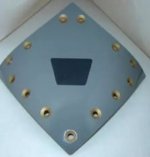
laying down foundation for DAS which was enhanced with F-35's AN/AAQ-37 DAS

Unfortunately these sections of F-22 were not designed to be modular to be replaced by newer sensor as partof MLU. Only the computing blocks, S/w & some small sub-systems are modular & upgradable or replacable. Hence perhaps this pylon-pod based EOTS/IRST to remove dependency on F-35 to share EO/IR passive detection data.
If a human can detect a rocket from 1,300 Kms then that's hell of an eye sight, why to invent & rely on telescopes. But we are not using WW era means by eyes for detection in 21st century even when human eye is said to be around 546 MP. And our paired eyes cannot give 360 degree vision obviously. And even more ridiculous is that our eyes can focus only on a small area with narrow FoV to recognise an object, we have to scan the entire wide FoV to build a bigger picture of situation.That's not a big deal. One can see rockets from even further away in the night with just the eyes.
The question is how far away it can see heat from friction.
So i think it is a big deal actually.
And this combo of DAS+EOTS+HMDS adds to the cost & capability of F-35 significantly. And now it is time to do something for F-22 also.
The new engine will probably reduce IR signature by cooled air shielding, serated nozzles, etc but Su-57 airframe won't change, that's what i meant.Not once the new engine comes in.
1 Russian Rubel = 1 INR. And they are communist/socialist country. Hence they are also financially constrained & unable to focus on all aspects of fighter jet tech. And now they are into Ukraine war facing sanctions.
They mastered super-agility, developed good radar, IRST & other things which are enough to deter/counter NATO but F-22/35 Vs Su-57 the Russians have a lot to catch up.
The following was the scenario earlier till F-35 demonstrated its DAS. Now the situation for passive IR detection has reversed.
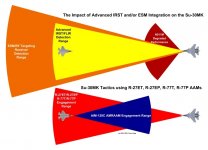
The Russian data for their OLS sensors seem to be very less, could be misleading but they have not released any testing footage:
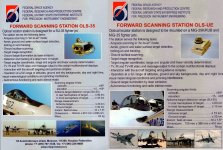
USA had the luxury of Western countries economic ecosystem which they used well for their R&D. Hence even if they didn't implement EOTS/IRST in F-22, they came back with a bang with F-35 sub-system compared to the Russian OLS/IRST & now they are trying to do something for the F-22.
Ok you are diverting from this focus on F-22's new mysterious gadget. I'm aware of E-7. Let's keep E-3, E-7 & USA-China war out from here.
No, just trying to say that if the E-3 cannot detect the J-20 from a long enough range, then smaller radars will do worse. Plus that the Su-57 is at least as stealthy as the J-20, if not more. So the J-20 and Su-57 are stealthy.
We all are common citizens here on unofficial forum, dependant on countless public media.
The frontal RCS of Su-57 could be near to F-22 but the design overall has flaws bcoz of which we pulled out of the Su-57 FGFA program. The Su-57 appears like a flattened & chiselled Su-3X. The Russians were using us as cash-cow & refused sharing knowledge & technology transfer.
All of that's just rumours. A combination of US pressure and Russian monopoly were the real reasons. When it comes to technical specs, HAL and IAF were involved in the design phase from 2010 to 2013, so why will they be unhappy about their own design? It wasn't an issue with the aircraft.
Hence F-35 cannot have lower RCS than F-22 bcoz it was never intended from design & business PoV.

Gen. Mike Hostage On The F-35; No Growlers Needed When War Starts - Breaking Defense
For years, the news about the most expensive conventional weapons system in US history, the F-35 Joint Strike Fighter, has been driven by its soaring costs, technical problems and schedule screw-ups. The government and Congress and the public rarely speak about what the F-35 will do, how...
“The F-35 is geared to go out and take down the surface targets,” says Hostage, leaning forward. “The F-35 doesn’t have the altitude, doesn’t have the speed [of the F-22], but it can beat the F-22 in stealth.”
If a human can detect a rocket from 1,300 Kms then that's hell of an eye sight, why to invent & rely on telescopes.
This is how a missile looks like in the night sky.
1 Russian Rubel = 1 INR. And they are communist/socialist country. Hence they are also financially constrained & unable to focus on all aspects of fighter jet tech. And now they are into Ukraine war facing sanctions.
The lower the currency, the greater the advantage an exporter has. Because the Russian govt earns their main revenue by exporting oil and gas, the rubles they earn has increased in value when it's converted.
USA had the luxury of Western countries economic ecosystem which they used well for their R&D. Hence even if they didn't implement EOTS/IRST in F-22, they came back with a bang with F-35 sub-system compared to the Russian OLS/IRST & now they are trying to do something for the F-22.
The Su-35 and Mig-35 OLS are a generation behind the one in the F-35. The Russians have QWIP based OLS only in the Su-57.
U can ask any electronics engineering student, it is not that simple. Different wavelengths/frequency require different antenna design, shape & size, power requirement. Then how the software controls the emmisions & processes data, that matters too.No, just trying to say that if the E-3 cannot detect the J-20 from a long enough range, then smaller radars will do worse. Plus that the Su-57 is at least as stealthy as the J-20, if not more. So the J-20 and Su-57 are stealthy.
We can't comapre a 1990s cell-phone & PCs with today's, so E-3 is old now in H/w & S/w, to be replaced by E-7, etc.
And i already said that if Su-57 & J-20 were not good then Putin & Xi would have punished their engineers.
But my focus here is passive IR detection.
That's what i said about Russian monopoly. Almost every YouTube channel & webpage has said that our partnership in technology was only around 25% but funding taken was more in ratio. Russians didn't agree for tech t/f & knowledge sharing.All of that's just rumours. A combination of US pressure and Russian monopoly were the real reasons. When it comes to technical specs, HAL and IAF were involved in the design phase from 2010 to 2013, so why will they be unhappy about their own design? It wasn't an issue with the aircraft.
I'm an IT engineer too, so technically i think that Su-57 still lagging behind F-22 in BVR. Su-57 will be dangerous in dogfight. Russians simply don't have the money to research & develop an all-aspect stealth fighter. Very few Su-57s exist & it has not reached its full expected potential. There are certain new & good features like DIRCM, LEVCONS, 3D-TVC, good cockpit, side & rear looking radar, blended antennas but weaknesses include less stealthy & typical IRST, less stealthy canopy, less stealthy intakes, 4 missiles in IWB instead of 6, SWB buldges out under the wing root increasing RCS, a big LD pod is still reuired compared to F-35 style EOTS, typical landing gears consuming more space than required, etc.
In that case they have a disparity among their own sources, they can't agree among themselves, LOL! Could be a false statement to increase F-35 sales & then F-22 shouldn't be restricted from export when it has less powerful engine than F-35, more RCS, no EOTS, inferior DAS, no HMDS, simple. This is hilarious actually.But stealth is not invisibility, especially for fighters that must have tails for maneuverability (rather than the B-2 stealth bomber’s tailless “flying wing” design). Both F-22s and F-35s will be spotted at range by low frequency radar. The F-35’s cross section is much smaller than the F-22’s, but that does not mean, Hostage concedes, that the F-35 is necessarily superior to the F-22 when we go to war. In fact, Hostage says that it takes eight F-35s to do what two F-22s can handle.
“The F-35 is geared to go out and take down the surface targets,” says Hostage, leaning forward. “The F-35 doesn’t have the altitude, doesn’t have the speed [of the F-22], but it can beat the F-22 in stealth.”

Example (Air Combat: Russia’s PAK-FA versus the F-22 and F-35)

LOL! They didn't even mention what type of missile & what range. But the fact is we require MAWS, simple. Good luck to pilots relying on their eyes.This is how a missile looks like in the night sky.


The following is a much better video & related to F-35:
It doesn't seem so looking at the living standards of their citizens in a frozen popsicle country. Every country exports multiple things.The lower the currency, the greater the advantage an exporter has. Because the Russian govt earns their main revenue by exporting oil and gas, the rubles they earn has increased in value when it's converted.
But i will definitely say that Russians have good aptitude & strong survival attitude.
Some public pages show range of QWIP to around 80 Kms while approaching head-on, that's better than 35-50Km of OLS-35.The Su-35 and Mig-35 OLS are a generation behind the one in the F-35. The Russians have QWIP based OLS only in the Su-57.
The 101KS-V (OLS-50M) which is IRST/EOTS of Su-57 is being estimated at 130Kms, but the detection video of rocket from 1300 Kms was by smaller aperture AN/AAQ-37 DAS in 10x zoom & not bigger aperture AN/AAQ-40 EOTS/IRST. So currently F-35 passive IR detection is way ahead than Su-57.

U can ask any electronics engineering student, it is not that simple. Different wavelengths/frequency require different antenna design, shape & size, power requirement. Then how the software controls the emmisions & processes data, that matters too.
We can't comapre a 1990s cell-phone & PCs with today's, so E-3 is old now in H/w & S/w, to be replaced by E-7, etc.
And i already said that if Su-57 & J-20 were not good then Putin & Xi would have punished their engineers.
That's not how it works though. Computers get frequent upgrades. So even an old radar, still a PESA, can detect stealth if it has the right software and computational power.
But my focus here is passive IR detection.
That's pretty much impossible to speculate.
That's what i said about Russian monopoly. Almost every YouTube channel & webpage has said that our partnership in technology was only around 25% but funding taken was more in ratio. Russians didn't agree for tech t/f & knowledge sharing.
I'm an IT engineer too, so technically i think that Su-57 still lagging behind F-22 in BVR. Su-57 will be dangerous in dogfight. Russians simply don't have the money to research & develop an all-aspect stealth fighter. Very few Su-57s exist & it has not reached its full expected potential. There are certain new & good features like DIRCM, LEVCONS, 3D-TVC, good cockpit, side & rear looking radar, blended antennas but weaknesses include less stealthy & typical IRST, less stealthy canopy, less stealthy intakes, 4 missiles in IWB instead of 6, SWB buldges out under the wing root increasing RCS, a big LD pod is still reuired compared to F-35 style EOTS, typical landing gears consuming more space than required, etc.
You are just assuming without any basis.
Every single bit of hardware and avionics of the Su-57 has been designed to not just match the F-22, but significantly exceed it. It is more or less similar in stealth. And no, what you hear in the media is mostly Western propaganda. It has greater range and performance, a higher weapons load, the electronics are a generation ahead. It even has technologies the F-22 lacks entirely. With the exception of stealth, the F-22 is not a match to the Su-57, which is something even the USAF has admitted in their air force document.
In that case they have a disparity among their own sources, they can't agree among themselves, LOL!
There is no disparity. It's just the way information has been analysed. The media simply ended up comparing the F-22's achieved stealth with the F-35's minimum expected stealth. When the F-35 completed development, they got a jet that was more stealthy than the F-22. The F-22 went through the same process, where the expected (0.05m2) and achieved (<0.001m2) measurements were different. You can say that even the Russians do not yet have a clear idea about how stealthy the Su-57 really is.
General Hostage is not "a" source, he is "the" source. There are no better sources because he was the commander of Air Combat Command, it's their most important air command. A ranking officer with the highest clearance.
LOL! They didn't even mention what type of missile & what range. But the fact is we require MAWS, simple. Good luck to pilots relying on their eyes.
The following is a much better video & related to F-35:
There's nothing spectacular about detecting the IR returns of BMs. If a mobile phone camera could do it in the visual spectrum, so can a very large IRST in the IR spectrum from an even greater distance. Hell, I can see stars from lightyears away. I can also see the sun from 150 million Kms away. IR detectors are used in space and BM launches all the time, it's very old tech.
This is just one of those "amazing F-35 facts for kids" moment, where they want to show off some capability by throwing your focus on something else, but has a different message for experts. The point of showing this off wasn't to demonstrate the capability of the IRST, because it's pretty generic, most fighter IRSTs tend to discard it as clutter, it was to demonstrate the F-35's capability to act as a sensor for the BMD net.
Later they indirectly revealed that the F-35 is integrated with the Patriot, which can provide fire control to the SAM to knock down BMs. So when a TBM is launched against a friendly position the F-35 is defending, it can detect the launch quicker than the Patriot battery and use a SAM to bring it down.
It doesn't seem so looking at the living standards of their citizens in a frozen popsicle country. Every country exports multiple things.
But i will definitely say that Russians have good aptitude & strong survival attitude.
Military R&D is funded by govt revenues, not by private entrepreneurship. It's like how Saudi govt is very rich, but its people are not exactly very rich compared to the wealth being hoarded by the govt. So the wealth of the people is largely irrelevant when the govt earnings are largely coming from outside the country, hence the Western need to isolate Russia.
Russia has a very rich govt populated by average people. Their procurement budget is half as big as the US procurement budget, and it's double India's procurement budget, which is why they modernise twice as fast as we do. There's more, India spent $200M on the development of Arjun since the 80s, including inflation. But we paid Russia $1.2B for T-90's ToT. That money was more than enough to pay off Russia's entire armour R&D budget since the end of the Cold War and they still made a profit.
Money doesn't work in exactly the same way in Russia as it does in the West. The world is subsidising Russian R&D through their oil and gas business along with defence exports.
Let me throw some examples your way. India plans to build 100+ FRCV a year, whereas Russia plans to build 500 Armatas a year. India bought 5 regiments of the S-400, the Russians are already operating 28 regiments and are still buying more, along with S-350 and S-500 in large numbers too. We bought over 350 fighter jets in 20 years, the Russians bought 400+ in 7 years, and are still buying more. Do you really think India has more money than Russia?
A Su-30MKI costs 3.5B rupees in India, but it costs 1.8B rubles in Russia. So when 1 rupee = 1 ruble, then the cost of a Flanker in Russia is half that of India's. So the $ value of the Su-30SM at today's exchange rate is $18M. Similarly, the Su-57 costs about 2.5B rubles, that's $25M. A Yasen class costs 50B rubles or $500M. A T-90 costs 100M rubles, that's $1M. All unit costs. That's how "rich" the Russian govt is. Their currency is trash, but it has value within Russia.
The theory behind it is explained here.

Why Russian Military Expenditure Is Much Higher Than Commonly Understood (As Is China’s) - War on the Rocks
Gresham’s Law states that bad money drives out good money, but anyone who has spent time around Washington, D.C., knows that this law can safely be
warontherocks.com
If necessary, they can spend more money than the US on defence every year (minus the navy) as long as their oil exports continue, which likely will.
Some public pages show range of QWIP to around 80 Kms while approaching head-on, that's better than 35-50Km of OLS-35.
The 101KS-V (OLS-50M) which is IRST/EOTS of Su-57 is being estimated at 130Kms, but the detection video of rocket from 1300 Kms was by smaller aperture AN/AAQ-37 DAS in 10x zoom & not bigger aperture AN/AAQ-40 EOTS/IRST. So currently F-35 passive IR detection is way ahead than Su-57.
View attachment 23017
So you're comparing 120 deg heat from airframe friction to 3000 deg heat from a BM's solid booster?
Which is more easily detected from 1000Km away, a gas stove lighting up or a nuclear explosion?
That's not how it works though. Computers get frequent upgrades. So even an old radar, still a PESA, can detect stealth if it has the right software and computational power.
That's pretty much impossible to speculate.
You are just assuming without any basis.
Every single bit of hardware and avionics of the Su-57 has been designed to not just match the F-22, but significantly exceed it. It is more or less similar in stealth. And no, what you hear in the media is mostly Western propaganda. It has greater range and performance, a higher weapons load, the electronics are a generation ahead. It even has technologies the F-22 lacks entirely. With the exception of stealth, the F-22 is not a match to the Su-57, which is something even the USAF has admitted in their air force document.
There is no disparity. It's just the way information has been analysed. The media simply ended up comparing the F-22's achieved stealth with the F-35's minimum expected stealth. When the F-35 completed development, they got a jet that was more stealthy than the F-22. The F-22 went through the same process, where the expected (0.05m2) and achieved (<0.001m2) measurements were different. You can say that even the Russians do not yet have a clear idea about how stealthy the Su-57 really is.
General Hostage is not "a" source, he is "the" source. There are no better sources because he was the commander of Air Combat Command, it's their most important air command. A ranking officer with the highest clearance.
There's nothing spectacular about detecting the IR returns of BMs. If a mobile phone camera could do it in the visual spectrum, so can a very large IRST in the IR spectrum from an even greater distance. Hell, I can see stars from lightyears away. I can also see the sun from 150 million Kms away. IR detectors
Those were not BM those are Terrier Orion test rockets which are the size of an SM missile with booster and they were detected and tracked 800+ miles away by EODAS.
are used in space and BM launches all the time, it's very old tech.
This is just one of those "amazing F-35 facts for kids" moment, where they want to show off some capability by throwing your focus on something else, but has a different message for experts. The point of showing this off wasn't to demonstrate the capability of the IRST, because it's pretty generic, most fighter IRSTs tend to discard it as clutter, it was to demonstrate the F-35's capability to act as a sensor for the BMD net.
Later they indirectly revealed that the F-35 is integrated with the Patriot, which can provide fire control to the SAM to knock down BMs. So when a TBM is launched against a friendly position the F-35 is defending, it can detect the launch quicker than the Patriot battery and use a SAM to bring it down.
Military R&D is funded by govt revenues, not by private entrepreneurship. It's like how Saudi govt is very rich, but its people are not exactly very rich compared to the wealth being hoarded by the govt. So the wealth of the people is largely irrelevant when the govt earnings are largely coming from outside the country, hence the Western need to isolate Russia.
Russia has a very rich govt populated by average people. Their procurement budget is half as big as the US procurement budget, and it's double India's procurement budget, which is why they modernise twice as fast as we do. There's more, India spent $200M on the development of Arjun since the 80s, including inflation. But we paid Russia $1.2B for T-90's ToT. That money was more than enough to pay off Russia's entire armour R&D budget since the end of the Cold War and they still made a profit.
Money doesn't work in exactly the same way in Russia as it does in the West. The world is subsidising Russian R&D through their oil and gas business along with defence exports.
Let me throw some examples your way. India plans to build 100+ FRCV a year, whereas Russia plans to build 500 Armatas a year. India bought 5 regiments of the S-400, the Russians are already operating 28 regiments and are still buying more, along with S-350 and S-500 in large numbers too. We bought over 350 fighter jets in 20 years, the Russians bought 400+ in 7 years, and are still buying more. Do you really think India has more money than Russia?
A Su-30MKI costs 3.5B rupees in India, but it costs 1.8B rubles in Russia. So when 1 rupee = 1 ruble, then the cost of a Flanker in Russia is half that of India's. So the $ value of the Su-30SM at today's exchange rate is $18M. Similarly, the Su-57 costs about 2.5B rubles, that's $25M. A Yasen class costs 50B rubles or $500M. A T-90 costs 100M rubles, that's $1M. All unit costs. That's how "rich" the Russian govt is. Their currency is trash, but it has value within Russia.
The theory behind it is explained here.

Why Russian Military Expenditure Is Much Higher Than Commonly Understood (As Is China’s) - War on the Rocks
Gresham’s Law states that bad money drives out good money, but anyone who has spent time around Washington, D.C., knows that this law can safely bewarontherocks.com
If necessary, they can spend more money than the US on defence every year (minus the navy) as long as their oil exports continue, which likely will.
So you're comparing 120 deg heat from airframe friction to 3000 deg heat from a BM's solid booster?
Which is more easily detected from 1000Km away, a gas stove lighting up or a nuclear explosion?
By the way.....As per the USAF, their E-3 AWACS can't spot the J-20 from far away, so it's pretty good. And you can bet the Su-57 would actually be better.

 (Chinese think U.S. commander lies when he says E-3 can’t see J-20)
(Chinese think U.S. commander lies when he says E-3 can’t see J-20)I don't wan't to discuss on this in this thread.

By the way.....
(Chinese think U.S. commander lies when he says E-3 can’t see J-20)
I don't wan't to discuss on this in this thread.
View attachment 23018
You can believe the USAF over the Chinese.
But this is the specialty of AWACS. If the E-3 can't see the J-20, then it has a very low RCS.
Obviously that's the theory of upgrade but just like don't rapidly upgrade our phone, laptop, washing machine, TV, etc when every year there are newer better models, similarly military systems also cannot be rapidly upgraded until the 1st iteration of the PROJECT is complete otherwise there will be significant surge in cost affecting country's economy.That's not how it works though. Computers get frequent upgrades. So even an old radar, still a PESA, can detect stealth if it has the right software and computational power.
I'm common citizen, not DoD person. This is casual unofficial hobby site for enthusiasts who's basis are the public media sources. But atleast i'm technically qualified & experienced.You are just assuming without any basis.
What would be your basis? Are you DoD guy?
I respect your belief but that's not what i believe, so let's not go in circles of dogfight of words. I did say that Su-57 is dangerous in close combat & it has some cool things like DIRCM, LEVCONS, 3D-TVC, etc which is yet to be seen on western jets but at the moment i believe that F-22 is better in BVR, that's all. So everything has plus & minus points, strengths & weaknesses, simple.Every single bit of hardware and avionics of the Su-57 has been designed to not just match the F-22, but significantly exceed it. It is more or less similar in stealth. And no, what you hear in the media is mostly Western propaganda. It has greater range and performance, a higher weapons load, the electronics are a generation ahead. It even has technologies the F-22 lacks entirely. With the exception of stealth, the F-22 is not a match to the Su-57, which is something even the USAF has admitted in their air force document.
Frankly it doesn't bother me too much about RCS of F-22 Vs F-35 bcoz it is in the order of 0.00XX sqm which rest of the world is yet to achieve.There is no disparity. It's just the way information has been analysed. The media simply ended up comparing the F-22's achieved stealth with the F-35's minimum expected stealth. When the F-35 completed development, they got a jet that was more stealthy than the F-22. The F-22 went through the same process, where the expected (0.05m2) and achieved (<0.001m2) measurements were different. You can say that even the Russians do not yet have a clear idea about how stealthy the Su-57 really is.
General Hostage is not "a" source, he is "the" source. There are no better sources because he was the commander of Air Combat Command, it's their most important air command. A ranking officer with the highest clearance.
But they measure RCS from every angle in RCS range as well as Anechoic chambers, so both Russia & USA know exactly the RCS figures of their jets. How honest they are in public is obviously speculative.


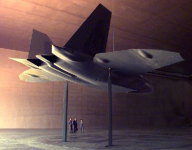
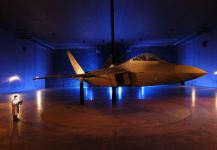
People like Mr. Hostage are in perfect position to take hostage of public's mind & opinions.
There's nothing spectacular about detecting the IR returns of BMs. If a mobile phone camera could do it in the visual spectrum, so can a very large IRST in the IR spectrum from an even greater distance. Hell, I can see stars from lightyears away. I can also see the sun from 150 million Kms away. IR detectors are used in space and BM launches all the time, it's very old tech.
This is just one of those "amazing F-35 facts for kids" moment, where they want to show off some capability by throwing your focus on something else, but has a different message for experts. The point of showing this off wasn't to demonstrate the capability of the IRST, because it's pretty generic, most fighter IRSTs tend to discard it as clutter, it was to demonstrate the F-35's capability to act as a sensor for the BMD net.
Later they indirectly revealed that the F-35 is integrated with the Patriot, which can provide fire control to the SAM to knock down BMs. So when a TBM is launched against a friendly position the F-35 is defending, it can detect the launch quicker than the Patriot battery and use a SAM to bring it down.
So nobody is stopping Russians to post a similar video demonstrating the OLS-50m which is larger than AN/AAQ-37. The public will believe what will be shown, simple. I'm an engineer, i'm on side of technology, not on side of Russia or USA. Technical people will tell u plus & minus points while non-tech people seem to take sides sentimentally just bcoz a country supplied arms since decades, LOL!
We are able to see the stars & sun only bcoz they release enough photonic energy to travel in vaccum without particle scattering. Inside the atmosphere it is a different story.
And there is something called aperture size, focal length in analog optics.
In digital optics, the focal plane sensor material matters like PbS, InSb, etc.

Whether the sensor is for LWIR, MWIR, SWIR, that matters as there will be different image created for same object.

The sensor is IR or UV based that matters.
The altitude of source & target also matter.
then the quantization rate matters, the software capability matters.

All these things decide the cost of the system. Just google the price of best DSLR cams, movie cams, telecasting cams. See videos how lenses & cameras are made.
Who doesn't wanna show-off? The Russians don't show-off? You don't see their documentaries it seems. The F-35's BMD video showed digital image processing in engineering mode & u said it right "most fighter IRSTs tend to discard it as clutter" bcoz their software engineers are more ignorant in programming. If our classmate went to IIT & we lagged behind whose fault is it? In my college 3rd year i made a project using DIP so i know what i'm saying.
If the F-35 can help in any way to share a target data, what's wrong in it? Is it a problem or a solution? Do you even know how software solutions work?
You have wonderful data on cost & procurements. Rich people are everywhere, we all have read about Russian Czars.Military R&D is funded by govt revenues, not by private entrepreneurship. It's like how Saudi govt is very rich, but its people are not exactly very rich compared to the wealth being hoarded by the govt. So the wealth of the people is largely irrelevant when the govt earnings are largely coming from outside the country, hence the Western need to isolate Russia.
Russia has a very rich govt populated by average people. Their procurement budget is half as big as the US procurement budget, and it's double India's procurement budget, which is why they modernise twice as fast as we do. There's more, India spent $200M on the development of Arjun since the 80s, including inflation. But we paid Russia $1.2B for T-90's ToT. That money was more than enough to pay off Russia's entire armour R&D budget since the end of the Cold War and they still made a profit.
Money doesn't work in exactly the same way in Russia as it does in the West. The world is subsidising Russian R&D through their oil and gas business along with defence exports.
Let me throw some examples your way. India plans to build 100+ FRCV a year, whereas Russia plans to build 500 Armatas a year. India bought 5 regiments of the S-400, the Russians are already operating 28 regiments and are still buying more, along with S-350 and S-500 in large numbers too. We bought over 350 fighter jets in 20 years, the Russians bought 400+ in 7 years, and are still buying more. Do you really think India has more money than Russia?
A Su-30MKI costs 3.5B rupees in India, but it costs 1.8B rubles in Russia. So when 1 rupee = 1 ruble, then the cost of a Flanker in Russia is half that of India's. So the $ value of the Su-30SM at today's exchange rate is $18M. Similarly, the Su-57 costs about 2.5B rubles, that's $25M. A Yasen class costs 50B rubles or $500M. A T-90 costs 100M rubles, that's $1M. All unit costs. That's how "rich" the Russian govt is. Their currency is trash, but it has value within Russia.
The theory behind it is explained here.
But Russia, a frozen popsicle country is having vast experience being weapon mongers since the WW era & India being a tropical country has vast experience in getting used, import dependency, corrupt govt. officials, citizens challenging eachother, inter-state racism, etc

India has lots of potential, global CEOs but all running after dollars, pounds, euros

India has lots of money but in secret accounts of corrupt people.
We Indians after 7 decades of independence talk of democracy & can't overthrow a monarch family

Israel, another tiny heat-scortched desert country, surrounded by enemies has survived well.
Let's see in near future. Ultimately our business with them should not hamper that's what matters. We are doing business now with both USA & Russia so no point in taking their sides. All products have plus & minus which u r not accepting. By integrating multi-national H/w & S/w we are already on side of technology, not nations.If necessary, they can spend more money than the US on defence every year (minus the navy) as long as their oil exports continue, which likely will.
No, technically i'm talking about how many Lumens of photonic energy is reaching the sensor from what distance, what type of sensor it is & whether the combo of H/w & S/w intelligently tracks it, classifies it & then decides to ignore it or straight away irgones it as clutter.So you're comparing 120 deg heat from airframe friction to 3000 deg heat from a BM's solid booster?
Which is more easily detected from 1000Km away, a gas stove lighting up or a nuclear explosion?
Bigger source will be detected at larger distance, smaller source will be detected at smaller distance.
So if BM's plume is detected from 1300Km in 10x digital zoom then a jet's plume could be detected in range of say 300-500Km easily, but it depends on so many technical & environmental factors i mentioned. And the Russians are yet to share their demo.
BTW if gas stove sized thruster lit up in vaccum of space then it would be equally easily picked up as any other big source as long as the photonic energy reaches the sensor, same way as we can see a star light years away.
I don't trust either of them for different reasonsYou can believe the USAF over the Chinese.


